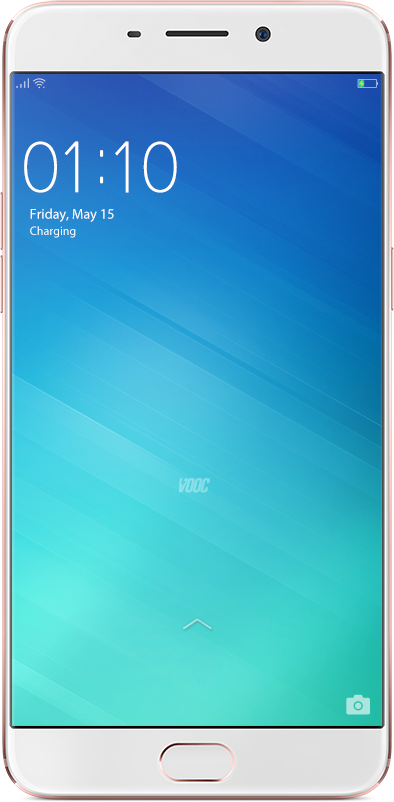We’re reviewing these two phones together due to the physical similarities and price points. Both have very smart, well-built, metallic chassis which belie their mid-range price point. However, the R9 is OPPO’s flagship phone while the X9 costs almost half as much as HTC’s flagship 10. The X9’s RRP is $699 while the R9’s RRP is $599.
Key Specs

HTC One X9
5.5-inch, 1080x1920, 401ppi screen, Mediatek MT6795 chipset, octa-core CPU with PowerVR G6200 GPU, 32/3GB RAM, nanoSIM, microSD (dedicated slot up to 256GB), 13(OIS)/5-megapixel cameras, 4K video, microUSB, 3000mAh battery, 154x76x8mm, 170g. Full specs here.

OPPO R9
5.5-inch, 1080x1920, screen, Mediatek MT6795 chipset, octa-core CPU, Mali-T860MP2 GPU, 4/64GB RAM, nanoSIM, Second SIM/microSD slot, 16/13-megapixel cameras, FullHD video, microUSB, 2850mAh battery, 152x74x7mm, 145g. More specs here.
Handling and general use
Both phones feel very similar. Their 5.5-inch Full HD screens are easy to read and offer vibrant colours. With the HTC all buttons are on the right while the OPPO’s volume buttons are on the left. The main difference is that OPPO provides a fingerprint reader which makes opening the phone less of a chore than using the HTC’s regular screen-unlock system. OPPO’s sensor is embedded in the main function button right at the bottom which is a bit uncomfortable to reach but it’s fast and forgiving to use if you register a few fingers.
Read more: Review: Wireless charging and waterproof cases for iPhone plus Ollclip (Movie) Studio case
Both phones tick along well with their octa-core processors and we rarely felt hampered by lag. Even so, it’s worth noting that the OPPO’s generous 4GB of operating RAM (and 64GB storage) is generous at this price point and there’s greater potential for high-level apps to run well despite the similar chipsets.
Both phones generally operate like standard Android affairs, although both have their own software overlays on top of Android Marshmallow. Both offer some interesting tweaks to Android (mainly in the camera departments) but both also can annoy with foibles. HTC’s Sense overlay has been dramatically toned down from previous versions and the main thing we see is the Sense Home app which puts your most-frequently-used apps on the home-screen whether you want them there or not.
OPPO’s ColorOS is harder to ignore. There are some good productivity features – like gesture shortcuts – if you’re willing to put the time in. There’s no separation between home screen and apps list, which might annoy or entice others. You can do things like backup and restore settings to OPPO’s own ‘O-Cloud’ but this comes at the expense of using regular Android backup which is very annoying. Another major issue is that Power-Saving mode kicks in at 20% battery and disables ALL internet connectivity. WTF?
Also, finding regular Android features becomes a chore – we still can’t find how to take a simple screenshot without downloading a third-party app. OPPO fans will like the extra features, which you can read about here, but forcing people to buy into a non-standard ecosystem never works well in our experience, especially when Android does everything so well nowadays.
Meanwhile, Android’s ‘swipe down to search for and open recently-used apps’ has proved very useful on other phones but HTC has done away with it. OPPO has kept it in and added online search functions too, but it’s laggy to use because of this.
Ultimately, these are minor niggles and not deal-breakers, but they’re there.
Battery life
Both phones just about managed to last a day although OPPO’s phone struggled harder when it had been used a lot. Basically, both are very much middling here and won’t suit hardcore phone users.
Both phones offer fast charge but we had a few issues with the OPPO in that some regular microUSB chargers (and cable combinations) worked incredibly slowly when charging the phone, so if you have a load of old charging accoutrements you may have to try different combinations to get some useable charging times when not using the supplied charger.
Extra features
The OPPO comes with Dual-SIM which is potentially very handy these days - whether you have separate accounts for phone calls and data, work or home usage or home and overseas SIMs, this is becoming an increasingly useful feature. The X9 does come in Dual-SIM variants, but not in the native Australian model, so you’ll need to go grey import.
Neither phone has NFC.
HTC’s ‘BoomSound’ speakers are worth a mention as they get particularly loud while remaining clear.
HTC Camera
HTC’s camera was very much hit and miss. It could struggle in bright light and easily blow-out highlights and wash out colours. It also didn’t focus correctly to a higher degree than we’re used to. The HDR mode really struggled if there was any movement at all, with double exposures frequently appearing: people could look a little ‘strange’ even when they remained still. Panoramas generally worked well when the lighting was good. Landscapes tended to need manual tinkering (on capture) to look good lest the metering washed everything out. It’s worth noting that the camera captures in RAW mode. Selfies get an optional airbrushing effect but generally look good all round.

Read more: Huawei P9 smartphone review: lifting photography to another level... sometimes.


Video can go all the way to 4K but was hit and miss. The Optical Image Stabilization (OIS) is able to reduce some camera shake, but not all – walking around is a bit of a mess but still better than we’ve seen elsewhere. When lighting was flat and there was little movement, the 4K image was actually impressively sharp with neutral colours. However, when moving around it struggled badly to focus on anything when we didn’t tap on the screen and the wild-fluctuations in exposure - even when lighting changed only slightly - was disappointing. If everyone holds still, you’ll be ok. But this is supposed to be video after all.
OPPO cameras
The main OPPO camera struggled a in low light with both focus and grain. However, in general it was quite capable. Its Panoramas were very forgiving if you waved the camera around a bit. Landscape shots were generally well-exposed – an ultra-pixel mode boosts resolution from 4160x3120 to 5696x4272 although you need to zoom in to notice much difference. Selfies came with a variety of filters with effects that ranged from making people look washed out or making them look grizzled.



There’s an interesting Gif camera setting but it’s a bit jerky by modern standards. Still, it’s nice to have. Video goes up to 1080p. We noticed the lack of OIS – you won’t want to walk around with this as things are very shaky. It too struggles with focusing on moving subjects without constantly jabbing the screen. But its exposure changes, while jarring, weren’t as all-over-the-place as with HTC.
Basically, both front and back are useable cameras but nothing special.
Conclusion
5.5-inch screens with 1080p resolutions can be very comfortable to use – text isn’t too small to read and the screen is large enough to display most media comfortably. But this, along with the smart-metal cases, is the only real highlight here.
Between the two, OPPO generally offers more (beyond 4K video) and costs $100 less (RRP). But RRP is misleading these days.
You can already pick up an X9 for $400 while an R9 still costs around $600 for the most part. Meanwhile, there are better phones on the market around this price – mainly Huawei’s large Mate 8 and photographic-wonder, the P9. Both of these are better phones for comparable money.
However, also on the radar is the imminent Moto g4 which is looking very promising and fully-featured for even less money and is available very soon.
Nonetheless, unless your demands don’t stretch much beyond a nice-looking Android phone at a non-premium price, there are better buys to be had.
Rating for both: 3.5 / 5

















